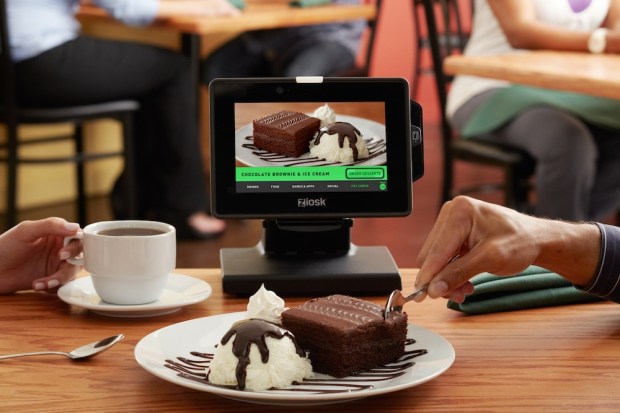How Ziosk Is Changing Dining Out

Since time en memoriam, dining out at any sort of table service restaurant was an essentially similar experience. As long as one were not in the type of place where they were likely to be asked if they would like fries with that order, the order of operations on a meal out was always the same: Hostess seats you, waitress take your drink orders, waitress brings the drinks, takes the food order, brings the food, brings the check. The fanciness of the locale, the quality of the food, the amount of flare on the waitresses’ uniforms can and will vary from place to place, but that essential order of operations pretty much remained unchanged.
Or at least it did until Ziosk strolled out onto the field with a simple question: couldn’t we automate more of this?
“I think anyone who has eaten in a restaurant on a busy night and felt like they spent more time waiting than enjoying their food already knew that there was a better way to handle the dining experience,” a Ziosk spokesperson told us.
And that better way, care of Ziosk, is a 7-inch tablet with 22 hours of battery life and a Wi-Fi connection designed to be an all-in-one dining assistant and entertainment center for customers who are sitting at a table. The tablet comes preloaded with games, making it a perennial favorite of children, but also Ziosk’s proprietary news-based trivia game (updated bi-weekly) and social media tie-in that allows diners to keep friends and family updated in real-time on their dinner’s progress.
“I think if most people take a quick survey through their social media feeds it becomes pretty apparent that eating is a social activity and digital communications has made it possible to make it a social activity beyond the people we’re literally eating with, and Ziosk is making it even easier still for consumers to tap into that.”
But convincing consumers to use the tablet was and is only part of the battle for a company hoping to put its tech on every table — or at least every casual dining table — coast to coast. Restaurants also have to want it there, and therein lies the biggest challenge for the firm coming up. Restaurants, running on thin margins don’t particularly like trying new things, especially if those things are technological upgrades with an uncertain ROI.
But Ziosk’s plan is to solve that problem walking in the door, because the tablets generate revenue. To access the world of tablet content in front of them, customers pay a $2 charge.
“And the revenue is only the start of what the tablets provide, though that is not insignificant since our tablets are used 85 percent of the time they appear on the table. However, we also see customers filling out surveys 30 percent of the time they are asked, without proffering a reward, as opposed to the less than 1 percent our customers were getting back when there was just a printed request on the receipt. And those surveys often required an additional reward like a free app coupon,” the spokesman noted.
Among other impressive stats to drop, Ziosk also boasts increasing both the size of tickets customers are buying and a dramatic uptick in online loyalty programs through the table-side dining experience.
And while the obvious thought might be that the big losers in this equation would be the waiters and waitresses, who have been somewhat disintermediated out of the process, that actually hasn’t been the case since, on average, wait staff see their tips improve notably in the places where the tablets are installed. Some write that improvement off to the faster service from a less frazzled waiter or waitress, while others note that it probably helps that the Ziosk tablet suggests an automatic 20 percent tip.
“The Ziosk unit is not meant in any way to replace or supplant any job positions at all,” he noted. “It’s a great support for the servers.”
And while it might be good for the services on call, one can’t help but wonder if the chain will soon be factoring Ziosks into their wait staff’s table load — and perhaps determining they don’t need quite as many servers on the floor. Given the size of the chains Ziosk is in today — Olive Garden, for example — that could mean some very big waves of staff restructuring nationwide.
But given the strength of consumer — and restaurant owner — response, it seems the tablet-assisted dining experience might just be the wave of the future, at least when it comes to fast casual. And Ziosk — which at present controls 95 percent of the table-side tablet market — is certainly well-positioned to ride that next wave.
